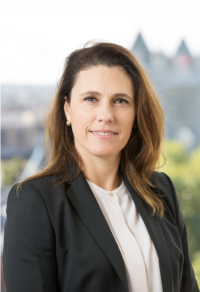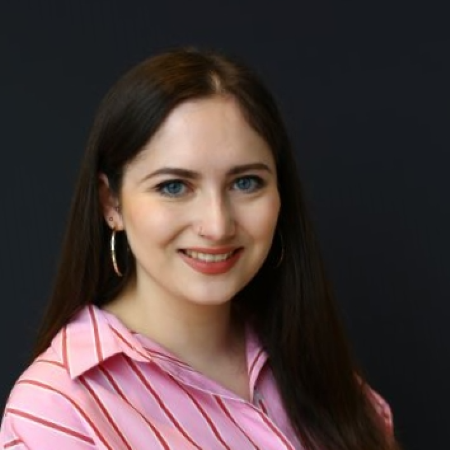Stages for change: Epshteyn on working the other side of the same trade
“Commodities trade and finance contribute to a real economy, and it is empowering to feel as if you can enact a real change or understand how that change can be brought about” - in this week’s Stages for Change interview, TXF’s Aife Howse talks to Tanya Epshteyn about her career from commodity finance banker to trader.

In the words of Jesse Jackson, politician and civil rights activist: ‘Inclusion is not a matter of political correctness. It is the key to growth’. This sentiment is not just shared by many, but is also backed up my research, with data from McKinsey showing that companies with gender diverse boards are 21% more likely to report financial performance above the average.
While the commodities industry is evolving with the wider employment sectors to become a more inclusive space, it remains a predominantly male-led business. A study by Catalyst shows that women make up nearly half of the financial services industry, but that less than 13% of women in finance make it to leadership roles such as CFO. Looking at the commodities industry in particular, women in leadership roles across the world’s largest commodity traders sits at an even slighter fraction of around 5%, according to Bloomberg.
As market observers at TXF, we’re in the privileged position to take a broader look at who is making an impact in the industry, including the exceptionally talented women who are making trade happen. In this series, we highlight a range of female professionals – from junior to senior, representing different types of institutions, each with different drivers to excel in the industry.
Tanya Epshteyn, head of structured finance at Czarnikow, has more than 20 years of experience in the banking industry under her belt. A year and a half ago, an opportunity came her way to steer her career path in a new direction. Joining the exciting and different - but just as challenging - trader world, she refers to her move as ‘joining the other side of the same trade – equal and opposite’.
I spoke to Tanya about her cross-sector career, and how her experience in the banking space led her to her hands-on role at Czarnikow – which was a previous client of hers.
Aife Howse: Tell us a bit about your organization and your role within it?
 Tanya Epshteyn: I have been working for Czarnikow - as opposed to with Czarnikow, which I did previously - since January 2020 and it’s been a stimulating experience. It has felt new but familiar at the same time, as I banked the company for over a decade before joining it in my current capacity.
Tanya Epshteyn: I have been working for Czarnikow - as opposed to with Czarnikow, which I did previously - since January 2020 and it’s been a stimulating experience. It has felt new but familiar at the same time, as I banked the company for over a decade before joining it in my current capacity.
My role at Czarnikow is to find financing solutions which link the real working capital needs of our stakeholders, be it on supply or sale side, with our banks’ ability to lend. The two do not always meet perfectly in the middle, and we in structured finance try to bridge the gap through engaging with alternative lenders, or indeed alternative structures which may include more than one type of collateral or a variety of supply chain controls, to ensure that risk is managed throughout the transaction.
Czarnikow has been involved with sugar for 160 years, and though a lot has changed in that time, we retain the transparent research ethos of our founder Ceasar Czarnikow. He used to distribute the latest market news via hand, which we now do via our interactive client portal, Czapp.
Czarnikow has also diversified its products to include other food ingredients, packaging, and energy, and offers a wide range of supply chain solutions - so it’s an exciting time to have joined the company and there is certainly a lot to do. We supply sugar, ingredients, and now raw material for packaging to around 90 countries and source them from around 60 countries. One has to think on one’s feet, know logistics and understand complexities of the various legal jurisdictions involved. It’s exciting.
Another contributor to job satisfaction at Czarnikow is our involvement with VIVE, our sustainability programme which is centered around continuous improvement. It is the latter that is the truly differentiating factor in our VIVE – the programme not only sets pass or fail targets, but it also offers advice on improvement at test points.
This approach is different to many other sustainability programmes currently available, and everything that’s different is difficult to take to scale at speed. But it is gaining momentum, both with participants across the entire supply chain and commodity finance banks which support it, and we are optimistic.
Aife: Where did your career begin, and how did you get to where you are today?
Tanya: My career in the City of London truly begun when Standard Bank offered me a position within their capital markets credit function. At that time debt capital markets were dominated by commodity producers or exporters.
I had a natural interest in getting closer to understanding financial aspects of their operations and worked hard to cross from capital markets to the commodities desk. My management gave me that opportunity, first in commodities’ credit function than origination, and I never looked back. Commodities trade and finance contribute to a real economy, and it is empowering to feel as if you can enact a real change or understand how that change can be brought about.
Aife: What’s your most pressing industry concern at the moment?
Tanya: I feel that there is a pronounced disconnect between the working capital needs in the real economy and the risk-off mode within the banking sector caused by overregulation and exacerbated by Covid 19. Regulatory changes have impacted how banks treat collateral for regulatory capital purposes, and this has come at a time when the world economy has had to evolve and keep moving.
Fraud has also hampered the market, and although risk management in trade finance will be enhanced by blockchain technology, the progress is slow. For most of 2020, non-discretionary use of capital at banks has put additional pressure on available liquidity, as companies drew on committed facilities which were never previously used, or indeed their internal ratings had been downgraded by credit teams following a downgrade in their respective country of risk, causing the cost of capital for banks to increase.
Unfortunately, we also see a widening skills gap in risk awareness and knowledge, as banking is becoming so process heavy. Newcomers into the industry, just out of the university, do not have the same exposure as we did to the real risks facing businesses.
Collateral valuations are driven by standardized lists and while an expert who designed the list will know what the different categories of risk entail and how they can be mitigated, I am not sure a young banker with 2-3 years’ experience in the sector would. If not addressed, this may lead to a further reduction in credible, easily bankable business done by banks, causing a liquidity squeeze for small and mid-caps, a space which will inevitably be filled by funds.
Aife: It is thought that structured finance will be on the up as a result of the events of last year. Is this something you are seeing?
Tanya: It is hard to say if the role of structured finance will be on the up, or down; it has always been important. What I expect is that we will need to adapt to the new risks brought about by the pandemic, and to the retrenchment of the banks’ risk appetite.
The main reason I think structured finance may become more engaged this year and potentially going forward is that real-life situations and requirements tend to be immediate, but solutions can take much longer to put in place, even more so currently, particularly if we are using a structure that is innovative.
Aife: Given that you have worked on both the banking side and the trader side, how do the two compare? Any words of wisdom for those looking to establish a career in either industry?
Tanya: I would say that in working for a corporate rather than a bank, the role is more entrepreneurial, less process-driven, and more results-orientated. I find it is closer to the current developments in the real economy.
However it also feels like the other side of the same coin, equal and opposite. I do not think you can do one job without having the experience of the other. Knowledge of trade finance banking products, from letters of credit to derivatives, and how the risks are managed on the banking side, what reporting is involved, and how regulatory capital is priced, is as imperative as understanding complexities of a supply chain.
Understanding how one can dissect trade flows into sections of assets and risk to fit with collateral valuation definitions is imperative, and you need both side of the same coin to be effective at it.
Connect to Tanya on LinkedIn: https://www.linkedin.com/in/tanya-epshteyn-05159a73/
Got a colleague who you’d like to recommend for our Stages for Change interview series? Get in touch by emailing aife.howse@txfmedia.com





